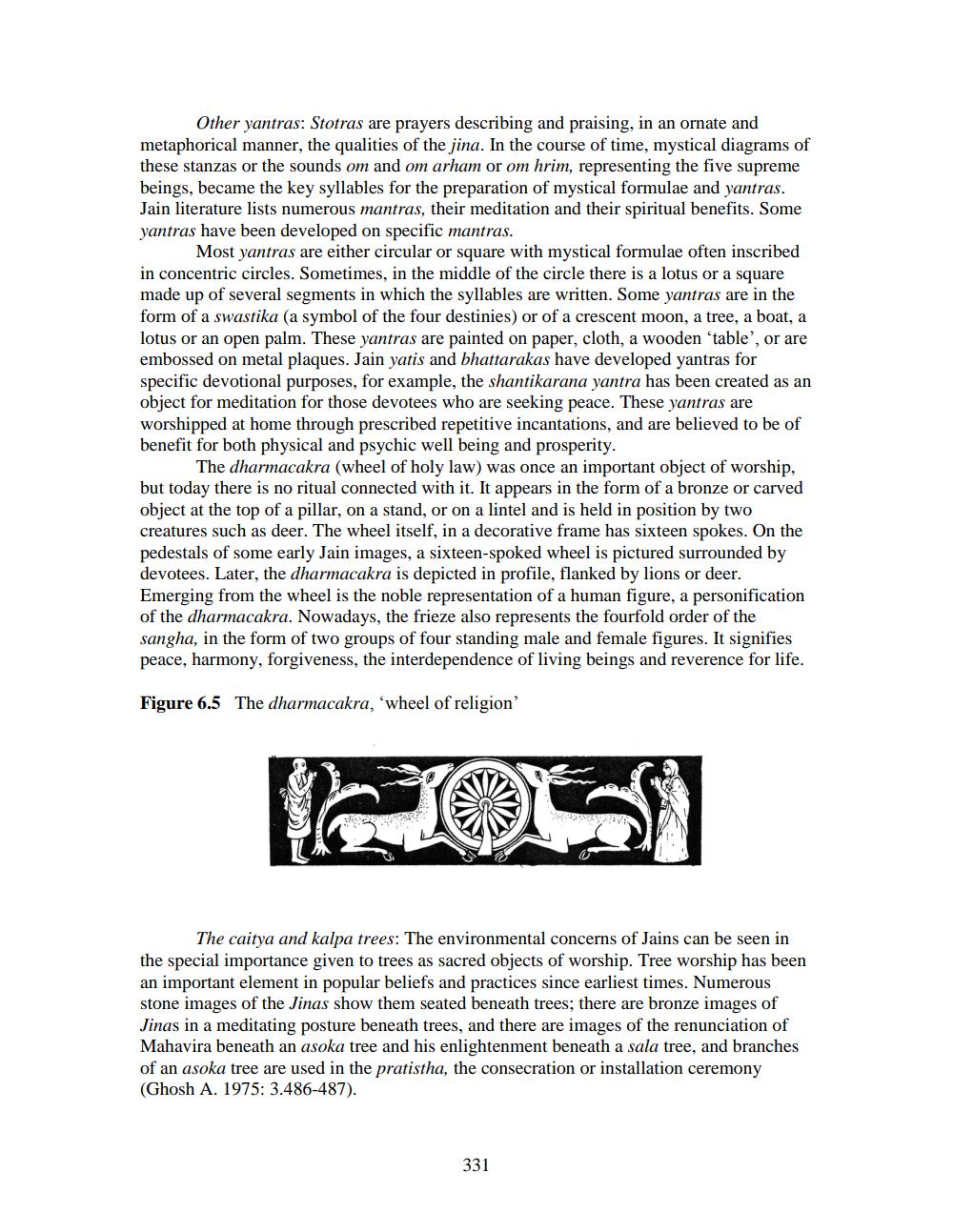________________
Other yantras: Stotras are prayers describing and praising, in an ornate and metaphorical manner, the qualities of the jina. In the course of time, mystical diagrams of these stanzas or the sounds om and om arham or om hrim, representing the five supreme beings, became the key syllables for the preparation of mystical formulae and yantras. Jain literature lists numerous mantras, their meditation and their spiritual benefits. Some yantras have been developed on specific mantras.
Most yantras are either circular or square with mystical formulae often inscribed in concentric circles. Sometimes, in the middle of the circle there is a lotus or a square made up of several segments in which the syllables are written. Some yantras are in the form of a swastika (a symbol of the four destinies) or of a crescent moon, a tree, a boat, a lotus or an open palm. These yantras are painted on paper, cloth, a wooden table', or are embossed on metal plaques. Jain yatis and bhattarakas have developed yantras for specific devotional purposes, for example, the shantikarana yantra has been created as an object for meditation for those devotees who are seeking peace. These yantras are worshipped at home through prescribed repetitive incantations, and are believed to be of benefit for both physical and psychic well being and prosperity.
The dharmacakra (wheel of holy law) was once an important object of worship, but today there is no ritual connected with it. It appears in the form of a bronze or carved object at the top of a pillar, on a stand, or on a lintel and is held in position by two creatures such as deer. The wheel itself, in a decorative frame has sixteen spokes. On the pedestals of some early Jain images, a sixteen-spoked wheel is pictured surrounded by devotees. Later, the dharmacakra is depicted in profile, flanked by lions or deer. Emerging from the wheel is the noble representation of a human figure, a personification of the dharmacakra. Nowadays, the frieze also represents the fourfold order of the sangha, in the form of two groups of four standing male and female figures. It signifies peace, harmony, forgiveness, the interdependence of living beings and reverence for life.
Figure 6.5 The dharmacakra, 'wheel of religion'
NES
The caitya and kalpa trees: The environmental concerns of Jains can be seen in the special importance given to trees as sacred objects of worship. Tree worship has been an important element in popular beliefs and practices since earliest times. Numerous stone images of the Jinas show them seated beneath trees; there are bronze images of Jinas in a meditating posture beneath trees, and there are images of the renunciation of Mahavira beneath an asoka tree and his enlightenment beneath a sala tree, and branches of an asoka tree are used in the pratistha, the consecration or installation ceremony (Ghosh A. 1975: 3.486-487).
331




